Meet the American who launched the Frisbee, Fred Morrison, World War II combat pilot, POW

Fred Morrison launched a leisure lifestyle with his fantastic plastic flying saucer.
His contribution to global recreation gained air only after he dodged death by steering a steel missile in the skies over Europe in World War II.
Morrison, a Southern California beach boy, first called his spinning discs Flyin’ Cake Pans and then Whirlo-Way. It’s known globally today as the Frisbee.
MEET THE AMERICAN WHO SPREAD GLOBAL GOSPEL OF SURFING, DUKE KAHANAMOKU, HAWAII’S ORIGINAL BIG KAHUNA
“It was an instant phenomenon,” Tristan Lin, brand director for Wham-O, told Fox News Digital.
“Before you knew it, every college kid in America was playing Frisbee.”
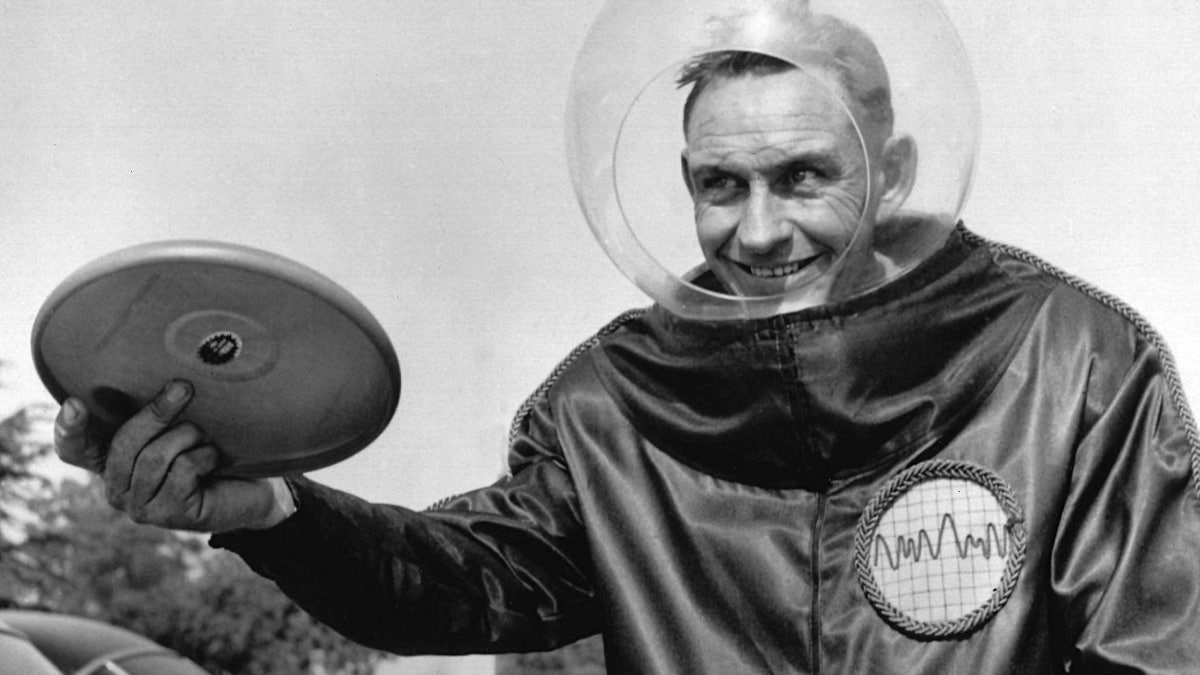
Walter Frederick Morrison, who invented the Frisbee, is shown promoting his Pluto Platters. They were the forerunner of the Frisbee. (Connecticut State Library/Public Domain)
Wham-O, based in California, popularized the hula-hoop, super ball and Morrison’s Frisbee, among other whimsical innovations.
The genius of the Frisbee “is its simplicity,” said Lin.
“It was an instant phenomenon.”
Morrison was actually inspired by the easy-as-pie act of slinging baking pans through the air, a common recreational activity before his Frisbee took flight.
“The Frisbee started off as nothing more than a container that carried pies,” reported the University of Southern California online engineering publication Illumin Magazine, which analyzed the physics of the flying disc.
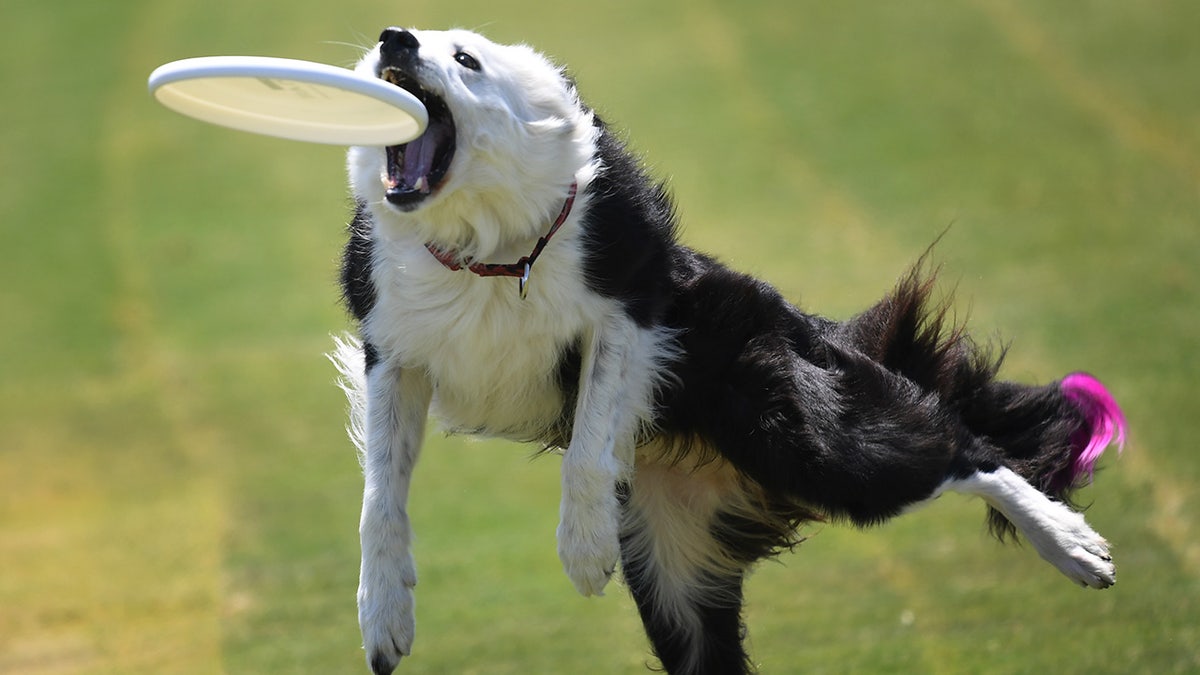
Border collie Emma catches a Frisbee in the “Freestyle Flying Disc” competition during the Purina Pro Plan Incredible Dog Challenge at Huntington Beach, California, June 8, 2018. (MARK RALSTON/AFP via Getty Images)
“It eventually became an immensely popular and internationally recognized toy.”
The Frisbee proved to be so much more than just a plastic plaything. It’s an icon of a confident, optimistic, victorious United States.
“The Frisbee screams America to me,” said Wham-O’s Lin. “It screams patriotism. It’s a symbol of American culture and creativity and a laid-back, playful but competitive United States.”
Something motivated America’s war heroes to contribute happiness to America after the horror of war.
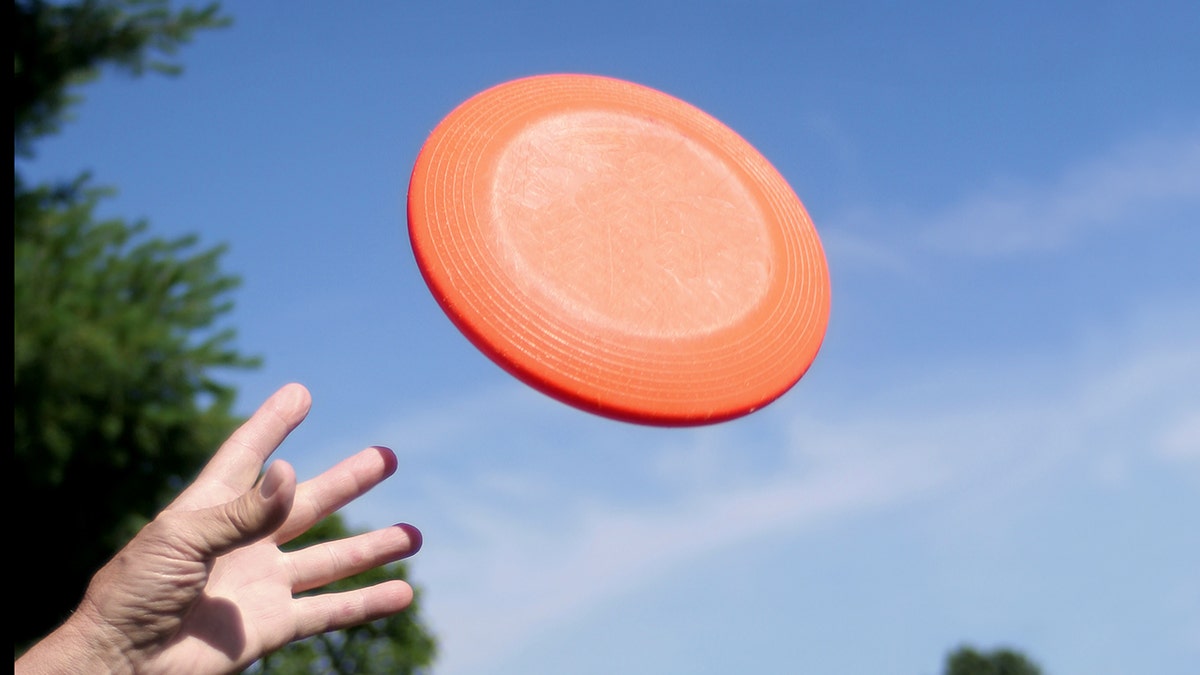
The Frisbee proved to be so much more than just a plastic plaything. It’s an icon of a confident, optimistic, victorious United States. (iStock)
Morrison’s story is hauntingly mirrored by another combat hero pilot: Fredric Arnold, the American who invented the folding beach chair.
Airborne kick the can
Walter Frederick Morrison was born on Jan. 23, 1920 in rural Richfield, Utah.
His father, Dr. Walter F. Morrison, moved his optometry practice and his family to Los Angeles when the future toy titan was just 11 years old.
It was the Great Depression and even the most ordinary objects presented playtime opportunities. The Frisbee traces its roots to an airborne version of kick the can.
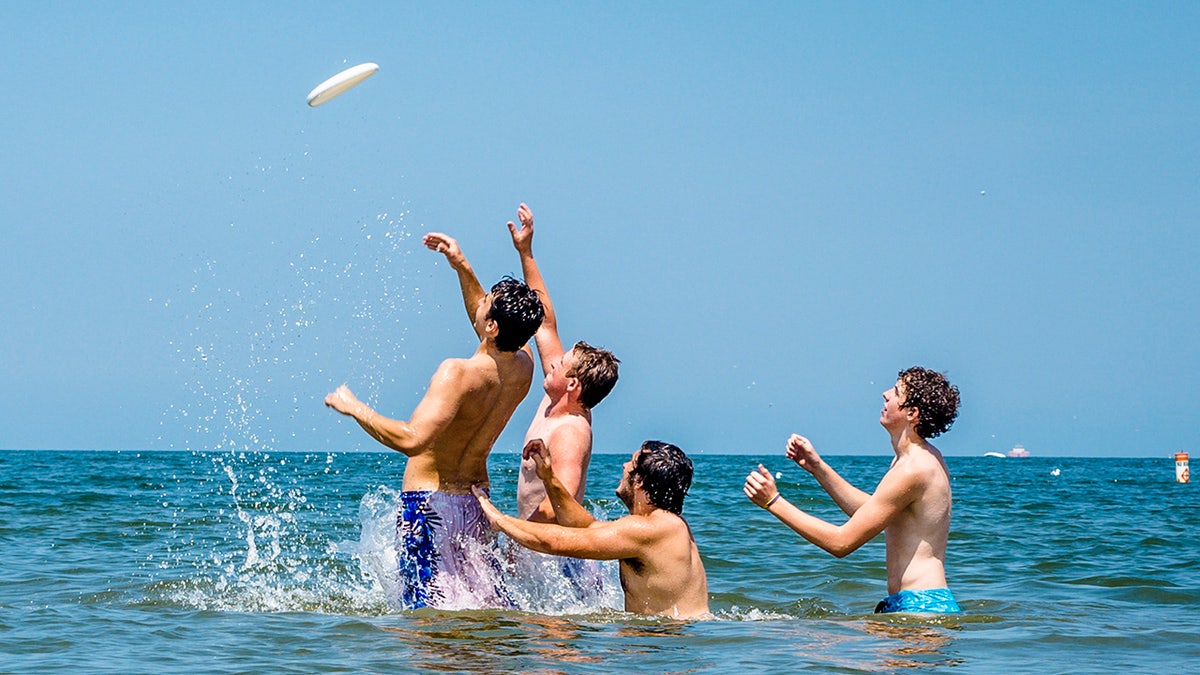
Four young friends jump for a Frisbee in Lake Erie on July 28, 2015, in Cleveland, Ohio. (Angelo Merendino/Corbis via Getty Images)
“The Frisbee story starts in college,” writes the National Museum of Play, which inducted the plastic surf-and-sand flying disc into its Toy Hall of Fame in 1988.
“Late 19th-century students at Yale and other New England universities played catch with pie plates … made by the nearby Frisbie Baking Co. of Bridgeport, Connecticut. They yelled ‘Frisbie!’ to warn passersby away from the spinning discs.”
The campus tradition gained air on a sunny SoCal beach in 1937.
Teenage Morrison, according to an often told industry tale, was tossing a 5-cent cake pan back and forth with his girlfriend Lucille when approached by another sunbum. The man offered Morrison 25 cents for the pan.

Model, author and actress Rachel McCord is seen with a Frisbee on July 30, 2016, in Los Angeles, California. (TSM/Bauer-Griffin/GC Images)
The couple instantly realized the profit potential.
“Soon ‘Flyinʼ Cake Pans’ were available at beaches and parks all over L.A.,” wrote Phil Kennedy in an online account of Morrison’s life story.
Kennedy co-authored the 2006 book “Flat Flip Flies Straight!: True Origins of the Frisbee,” with the inventor himself.
The couple instantly realized the profit potential.
Sales of discs “funded dates and eventually a wedding ring. Fred and Lu got joined.”
And then they got separated by war. Morrison joined the Army Air Force, piloting P-47 Thunderbolt fighter-bombers in World War II.
“The P-47 was a behemoth,” writes the National World War II Museum. The 5-ton warplane, it notes, was “loaded with 3 tons of fuel, bombs and ammunition.”
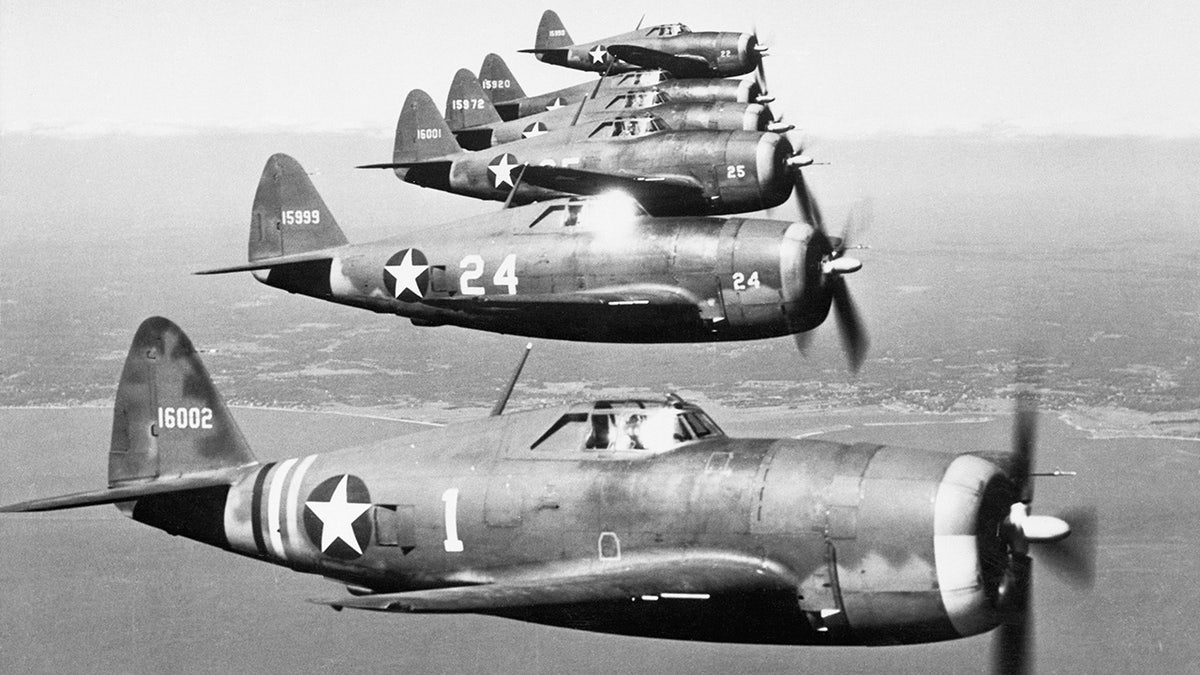
The Republic P-47B Thunderbolt. Believed to be fastest fighters flown during World War II. (Getty Images)
He survived 58 nerve-breaking missions when his string of skill and luck ran out.
He was shot down in Italy and captured by the Germans.
“He was held as a POW for over a month, but he survived,” The Saturday Evening Post wrote in a 2021 Frisbee chronicle.
“After the war ended and he returned home, Morrison’s thoughts turned back to his homemade flyer.”
Luck arrives from out of space
The mechanics of flinging a Frisbee were familiar to humanity for millennia.
“Humans have been tossing flat, round objects since time immemorial – first, out of curiosity to watch something remain airborne in defiance of gravity and because it was fun,” wrote Morrison co-author Kennedy.
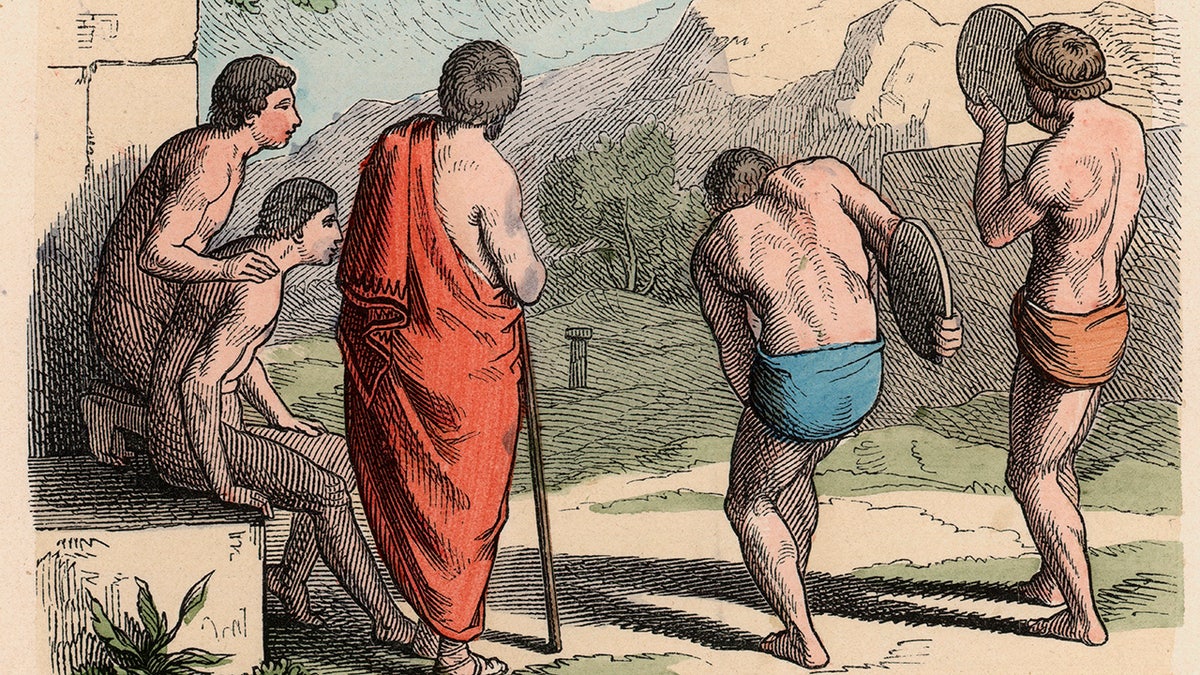
In Ancient Greece, the sport of discus throwing is shown. Colored engraving by Heinrich Leutemann (1824-1905). (Stefano Bianchetti/Corbis via Getty Images)
He added, “Later, it was discovered that flying objects could also be used as weapons, which led to showing off feats of skill, and organized sporting events, such as hurling the discus at the early Greek Olympics.”
Morrison put an entrepreneurial post-World War II American spin on the age-old spiraling missile. He harvested wealth from leisure.
MEET THE AMERICAN WHO REPORTED THE FIRST SENSATIONAL UFO ENCOUNTERS, PURITAN LEADER JOHN WINTHROP
Ever since his 1937 epiphany, Morrison had gained intense wisdom studying the science of soaring at Uncle Sam’s school of survival.
“His flying experience gave him new insights [into] the aerodynamics of flight … and, once out of the service, a new inspiration to pick up where he had left off,” wrote Kennedy.
Morrison’s first new disc in 1946, the pressed metal Whirlo-Way, was soon replaced with a lightweight disc made possible by advances in plastics.
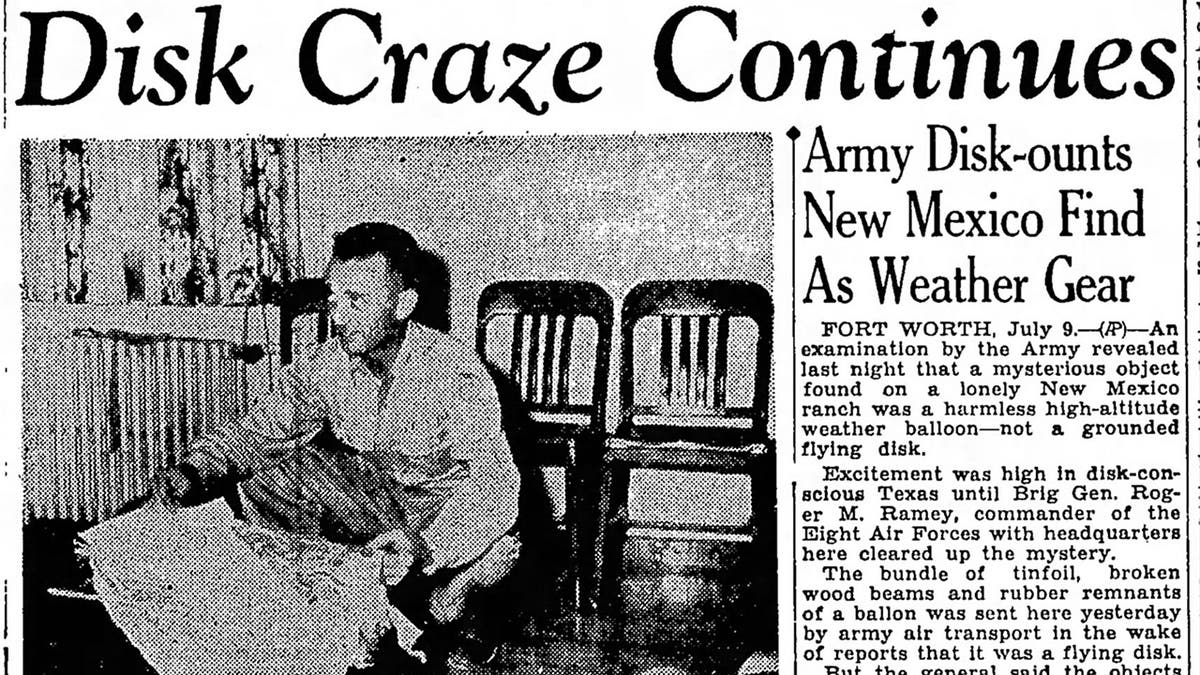
Jesse Marcel, head intelligence officer, who initially investigated and recovered some of the debris from the Roswell UFO site, is shown above. Corsicana Daily Sun on July 9, 1947. (Universal History Archive/Universal Images Group via Getty Images)
Unforeseen fortune also arrived from out of space – or did it?
“It’s hard to imagine today, but in 1946 there were no flying saucers … at least by that name,” reported the Flying Disc Museum, a repository of Frisbee history and lore in Phoenix, Arizona.
“It’s a symbol of American culture and creativity and a laid-back, playful but competitive United States.”
Pilot Ken Arnold claimed to see a flying object in Washington state in June 1947. Roswell, New Mexico became the center of UFO conspiracies that same summer.
America’s emerging mass media dubbed the aerial phenomenon “flying saucers.”
The nation’s also-emerging consumer culture was obsessed by the flying discs, portrayed in popular culture to look much like Morrison’s Whirlo-Way.
He renamed an improved version the Flyin-Saucer, and then, with a breakthrough new design in 1955, the Pluto Platter.
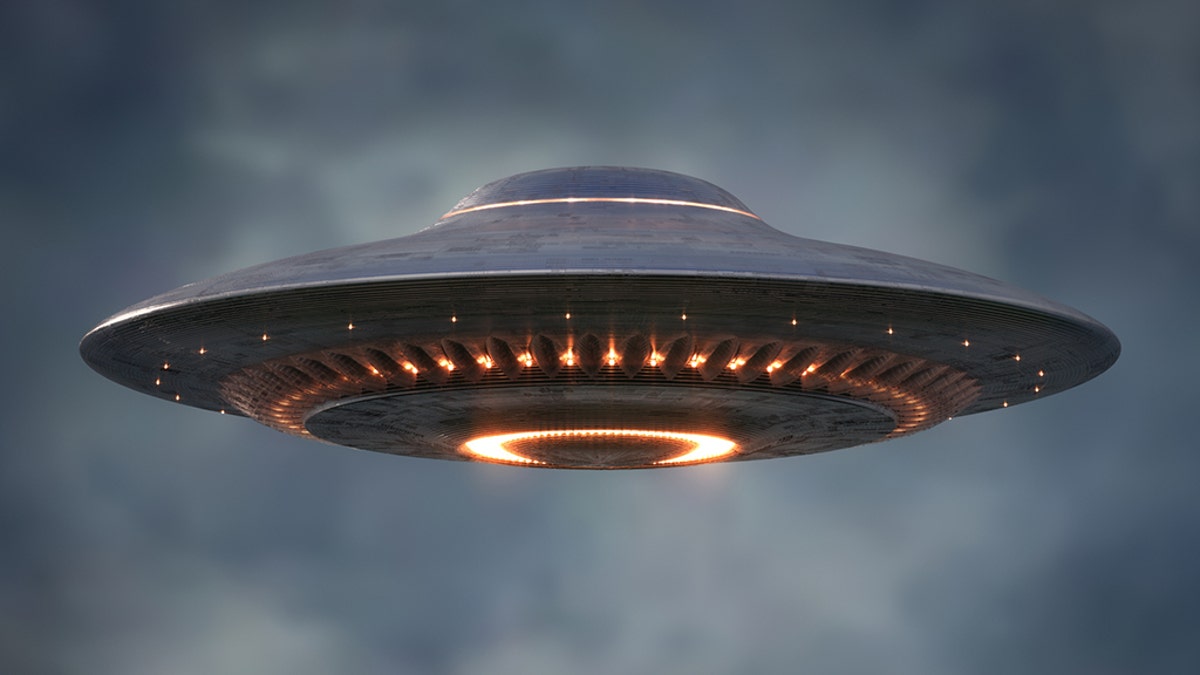
UFOs portrayed as flying saucers became a pop-culture phenomenon after World War II. (iStock)
After business fits and starts, the war hero celebrated his 37th birthday on Jan. 23, 1957, by inking a deal with Wham-0, a toy-marketing dynamo.
Wham-O renamed it the Frisbee, reportedly inspired by the pans from Frisbie Baking Co. that Yale students tossed around the Connecticut campus.
Morrison said he “hated” the name. Then the royalties arrived.
Wham-O reportedly sold 100 million Frisbees by the mid-1960s.
‘Obvious connection’ with another WWII pilot, inventor
Walter Frederick “Fred” Morrison died on Feb. 9, 2010 at his home in Monroe, Utah, after battling cancer and Father Time. He was 90 years old.
He made international headlines when he passed away.
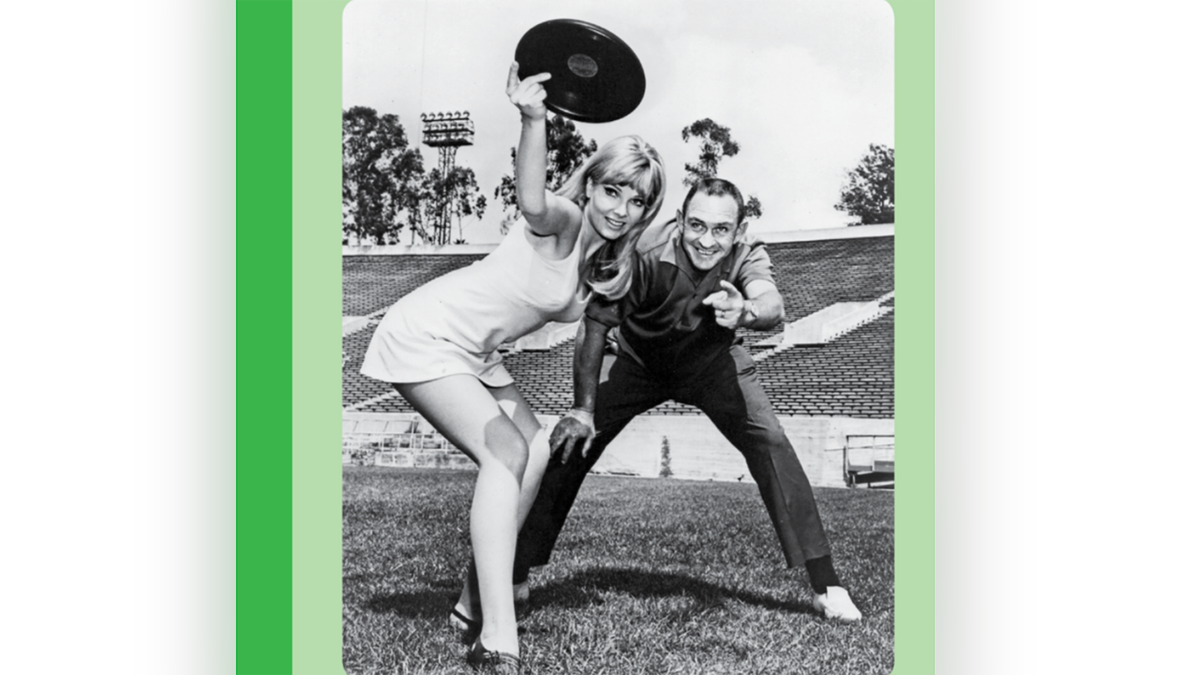
Frisbee inventor Fred Morrison with an unnamed woman during a publicity shoot for the Wham-O Frisbee. From “The Wham-O Superbook: 70 Years of Fun” by Tim Walsh. (Tim Walsh/Wham-O)
“That simple little toy has permeated every continent in every country, as many homes have Frisbees as any other device ever invented,” Morrison’s attorney, Kay McIff, told The Associated Press in an obituary published around the world.
CLICK HERE TO SIGN UP FOR OUR LIFESTYLE NEWSLETTER
“How would you get through your youth without learning to throw a Frisbee?”

The Pluto Platter was an early version of the Frisbee by inventor Fred Morrison. The name capitalized on the nation’s obsession with UFOs after World War II. The mysterious objects were dubbed flying saucers in popular culture and portrayed to look much like Morrison’s flying discs. From “The Wham-O Superbook: 70 Years of Fun” by Tim Walsh. (Tim Walsh/Wham-O)
Morrison’s wartime and postwar story echoes with haunting similarity that of another architect of the postwar American lifestyle: Frederic Arnold, the American who invented the folding beach chair.
Both were named Fred. Both flew dual-purpose pursuit planes, Arnold a P-38. Both miraculously survived 50 or more terrifying combat missions. Both were shot down and sent to German POW camps.
To read more stories in this unique “Meet the American Who…” series from Fox News Digital, click here.
Fred Morrison and Fred Arnold even shared the same birthday. Frisbee Fred was born on Jan. 23, 1920. Folding Chair Fred was born on Jan. 23, 1922.
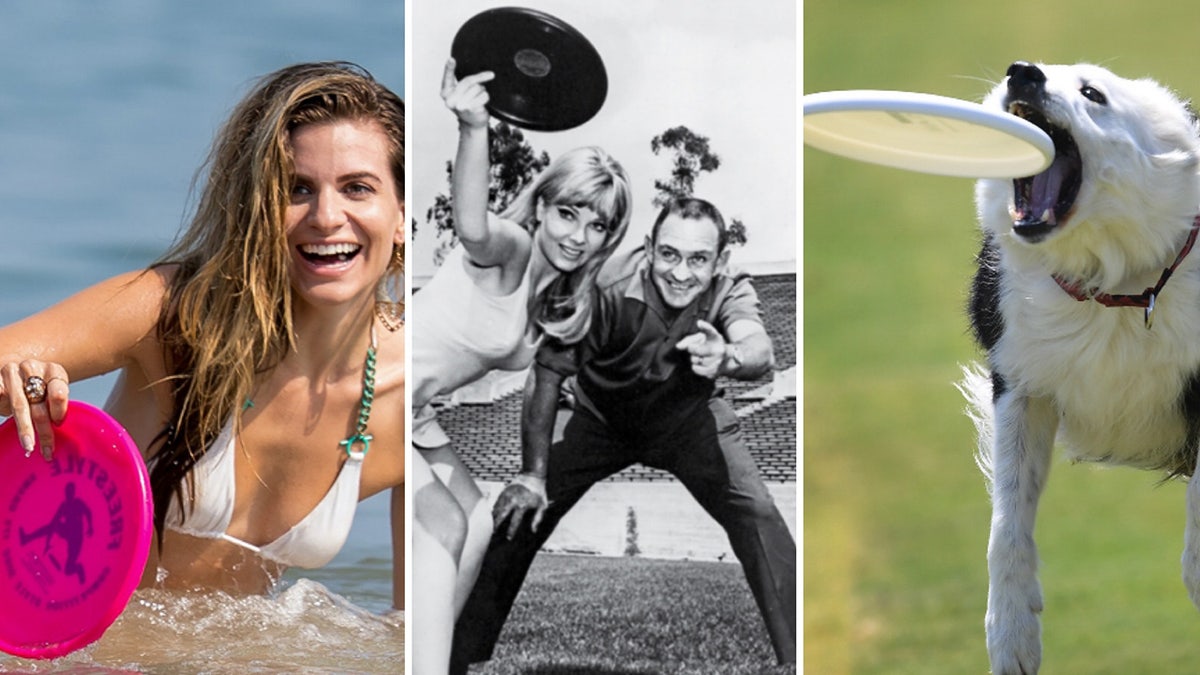
Fred Morrison, shown in the center photo, first conceived of a flying disc for recreation during the Great Depression. It became a reality after he flew 58 combat missions in World War II. (TSM/Bauer-Griffin/GC Images; Tim Walsh/Wham-O; MARK RALSTON/AFP via Getty Images)
Both men conceived their inventions at the beach – with the women they married.
“There is an obvious connection between the two men,” Marc Arnold said of his dad, and of Morrison, after Fox News Digital shared the similarities between the two men.

Team Xi’an Physical Education University V7 (in blue shirt) competes against Team Xi’an Terra-Cotta Warriors-RJM in the opener of the China’s first National Ultimate Frisbee League on August 6, 2022. (Zhang Yichen/China News Service via Getty Images)
CLICK HERE TO GET THE FOX NEWS APP
“I think after the horrors of war they left behind, they sought to build a new reality. I think after surviving all that carnage they thought, What’s the point of living if there aren’t also on the other end a spectrum of joyous opportunities?”







